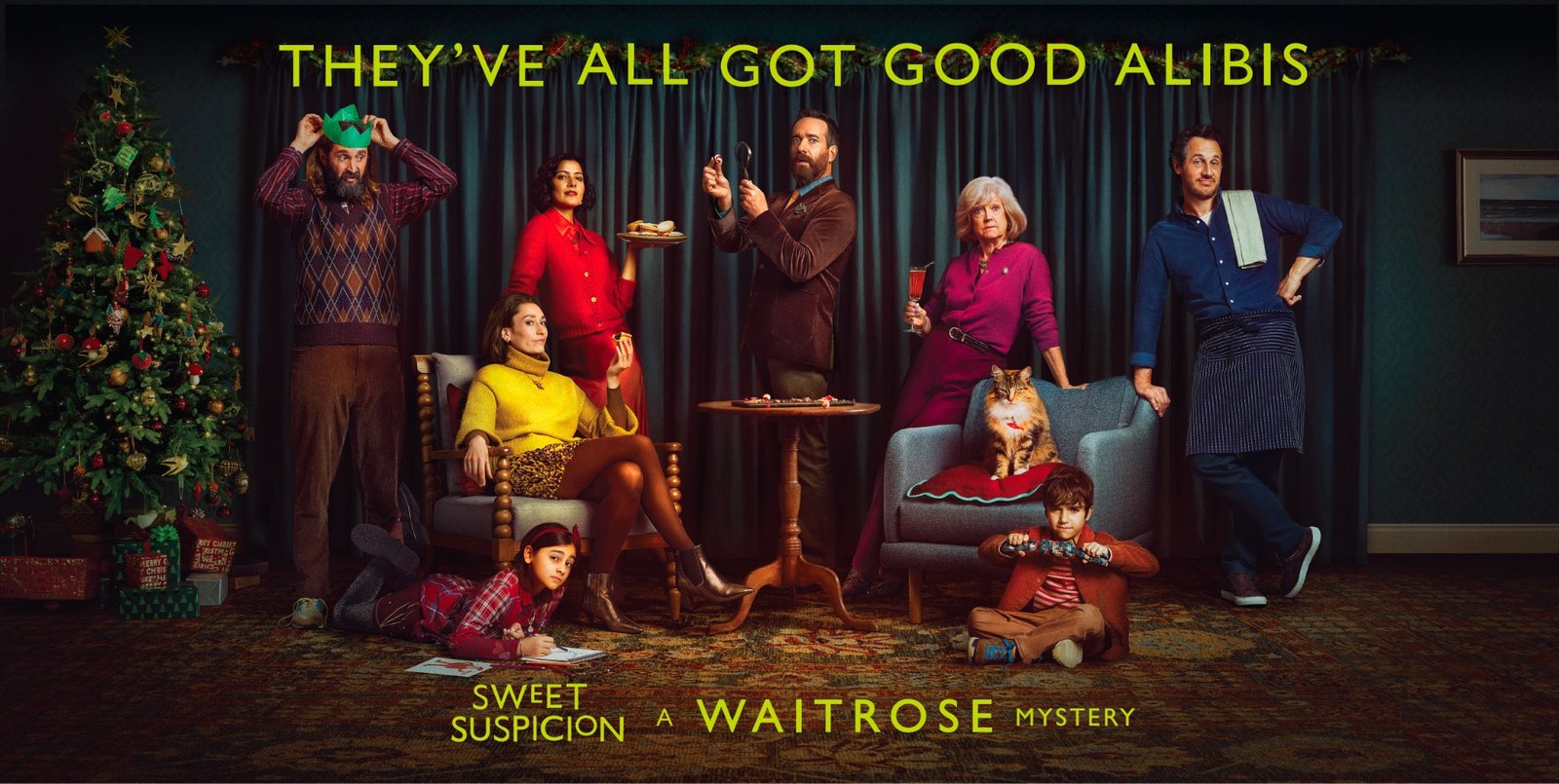Get In Touch
hello@untangld.co
Get In Touch
hello@untangld.co
Follow
|
LinkedIn

We use cookies to make sure you have the best experience on our website. Fear not, we don’t sell your data to third parties.


The rise of digital democratised expression but atomised attention. The MeToo movement redefined power and accountability. A global pandemic revealed just how fragile and interdependent our systems really are. Now, AI is reshaping how we think, create and connect. These were cultural earthquakes that re-laid the ground beneath every institution.
In an age of algorithmic sameness, what separates relevance from irrelevance is the ability to listen to the currents, contradictions and collective anxieties that shape our world. As brands lose their monopoly on meaning, the real battleground is belief. The clever ones who get it have stopped chasing cultural trends and are now helping mould them.
AI alone won’t save you. It is the new filter, not the new fuel.
In the rush to automate everything, we risk amputating the very thing that makes brands matter. Humanity.
AI is brilliant at mimicry but meaning demands more than maths. The future will belong to those who know when to pause, edit, and resist the algorithmic urge to optimise the soul out of their story.
The backlash has begun.
Certified Human is a cultural counterpunch to the synthetic content that floods our feeds and chatbot voices that slip into the uncanny valley, people are developing a “hesitation reflex.” Who made this? Can I trust it? Is anyone even there?
In this climate, perfection is suspicious. Improfection (sic) is proof. Etiquette matters and “woops your Chat GPT is showing” is the new cultural faux pas.
The brands that thrive won’t be the ones that outsource their identity to GPT prompts, they’ll be the ones who show up, visibly and vulnerably. Human-powered, AI-backed. Never the other way around.
From brands to win now is to decode culture before it defines them. Because the future doesn’t reward the loudest voice. It rewards the most attuned.
It’s not just the same culturally salient brands that unlock this outsized growth.
Monzo built cultural cachet by embedding transparency and social purpose into fintech, aligning with Gen Z’s values to grow to 7 million customers and triple revenue.
Octopus Energy turned sustainability into a movement, using humour and activism to become the UK’s fastest-growing energy brand and springboard into financial services.
And Nutmeg reframed wealth for a sceptical generation, translating ethical investing into plain English and lifestyle-led storytelling, a strategy that attracted £4.5B in AUM and the attention of JPMorgan.
Understanding culture helped scale these brand through actions not just ads.
And that’s the real shift: strategy can’t just live in the slide. It needs to move.
While AI is a wonderful people pleaser, diligently hoovering up history and spoon-feeding it back to us, it’s more vacuum than visionary.

Understanding your brand’s role in culture means embracing the rough edges. And having the tools to do something with what you find.
That’s why at Untangld, we build strategy to move.
We’re an international strategy studio designing breakthroughs that move business.
Our approach centres on strategy in action: fast, focused, and culturally attuned. We run strategy pilots. Build experience maps. Pressure test concepts. And turn insight into movement.
One of the most powerful tools we use to do it is the Cultural Canvas.
Cultural Canvas is our proprietary intelligence system built to map the shifting terrain of consumer conversations. Not just trends, but the deeper patterns underneath them. It listens to millions of real, raw, emotional digital exchanges, from Reddit threads to TikTok comments to YouTube reactions and reveals the white space. Where the energy is building.
Too often, strategy gets locked in a PDF graveyard. We believe it should live where decisions happen. In the creative brief, in the product sprint, in the customer experience. Strategy should be seen, felt and used. All else is ineffective and ornamental.
Take our recent work with Amazon Prime Video. At face value, it is another streaming service in a saturated market. But inside culture it is a battleground for belonging, identity and self expression.
Through the Cultural Canvas, we mapped over 6.7 million mentions and 225 million engagements around fandom. What surfaced was not genre preference or binge rates. It was belonging. Personal passion. The experience. The three biggest conversations with the strongest pull.
We decoded an invisible economy of meaning. How fans use online spaces as third places when traditional community falters. How they construct identity through parasocial relationships. How the act of loving something becomes an act of self-definition, even defiance.
What does that mean for a brand? It means stop talking at people. Start building with them. Move beyond ad campaigns into rituals, tools, environments and experiences to create resonance, not just reach.
In practice, we identified white space for Amazon to shift from content pusher to cultural facilitator. Not just selling stories, but giving fans the tools to extend those stories — remixing, co creating, belonging. Campaigns became less about promoting shows and more about inviting people into a community.
This is the power of Cultural Canvassing. It does not chase hype. It finds gravitational pull. When strategy is built on real emotion, not brand vanity, it earns relevance instead of begging for attention.
Warner Music challenged us to build a strategy that would transform passive digital followers into true fans.
We began with BENNETT, a breakout name in the European Techno scene. He had TikTok momentum but not yet a movement. His rise had been fast and fragmented, creating a gap between perception and identity. He was being streamed, but not truly understood.
Through Cultural Canvassing and in depth consumer listening, we identified over one million Beat Seekers and EDM Explorers across Europe who were primed for connection but not yet converted. People with a shared aesthetic, a collective hunger for adrenaline, art and emotion. This informed a sharp new proposition and activation strategy. From the backing track to a moment to an unignorable sound that ignites energy. BENNETT was about artistic adrenaline. A new way to activate his identity for new legions of fans.
This is what it looks like when strategy and culture collide. When research is not a diagnostic exercise but a creative catalyst. When brands stop broadcasting and start belonging.
The implication for marketers is clear. In 2025, you are not competing for awareness. You are competing for meaning. Every brand is being silently evaluated by the question: do you get it?
Not just do you get your customer. Do you get the moment they are living in? The memes they share. The contradictions they feel. The future they are voting for with their time, money and identity.
The answer is not in the data. Data only tells you what. Culture tells you why.
In a world of declining trust and rising scepticism, brands that participate meaningfully in culture do not just grow, they endure. They become part of the social fabric.
Cultural Canvas is our way of helping brands make that breakthrough. To write themselves into the story of now and stay there.
Because strategy without cultural literacy is guesswork and in this climate, guesswork is just risk with a nice font.
So the question becomes: what story is your brand telling? And more importantly, is anyone still listening?
By James Needham,
Co Founder, Untangld









→ Over 20 years experience across APAC and the UK helping redefine some of the world’s most iconic and effective brands, and leading complex research and segmentation projects from Budget Direct, Big4, Crime Stoppers, RACV and CommBank.
